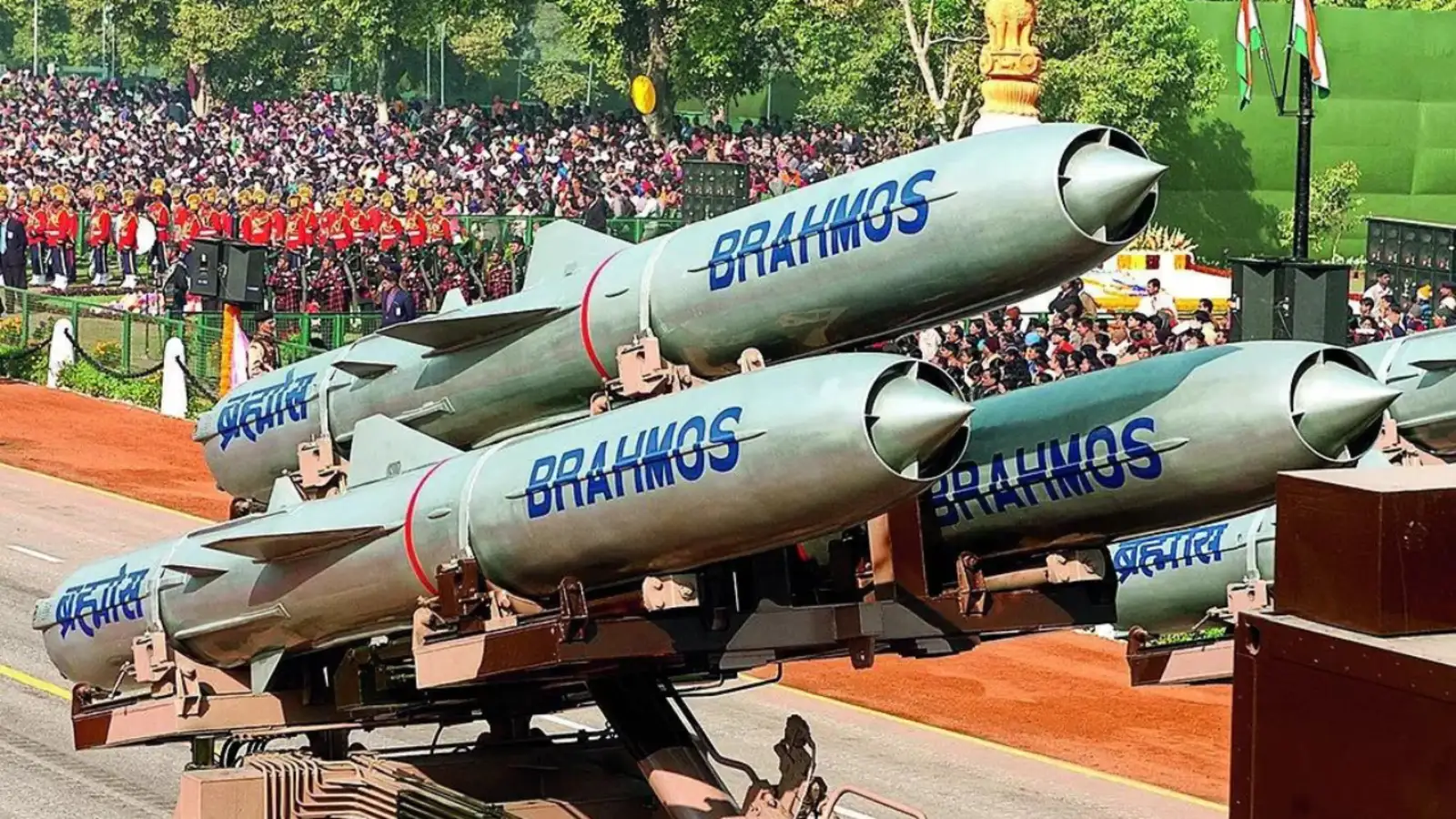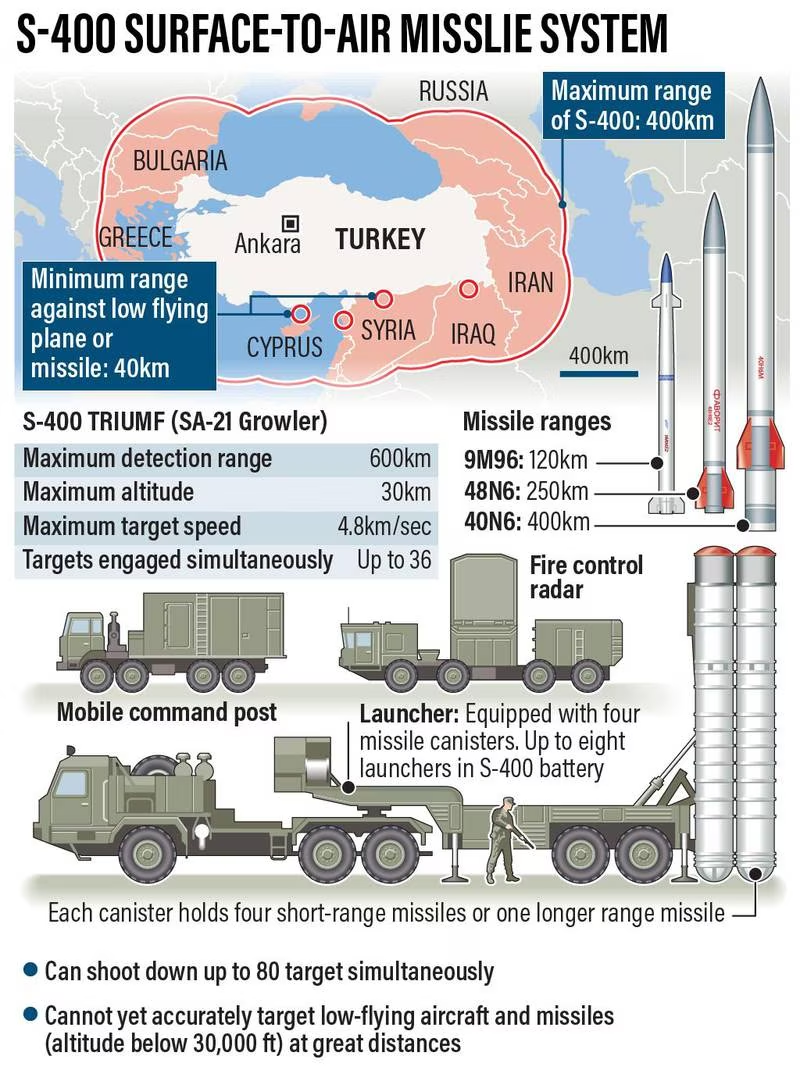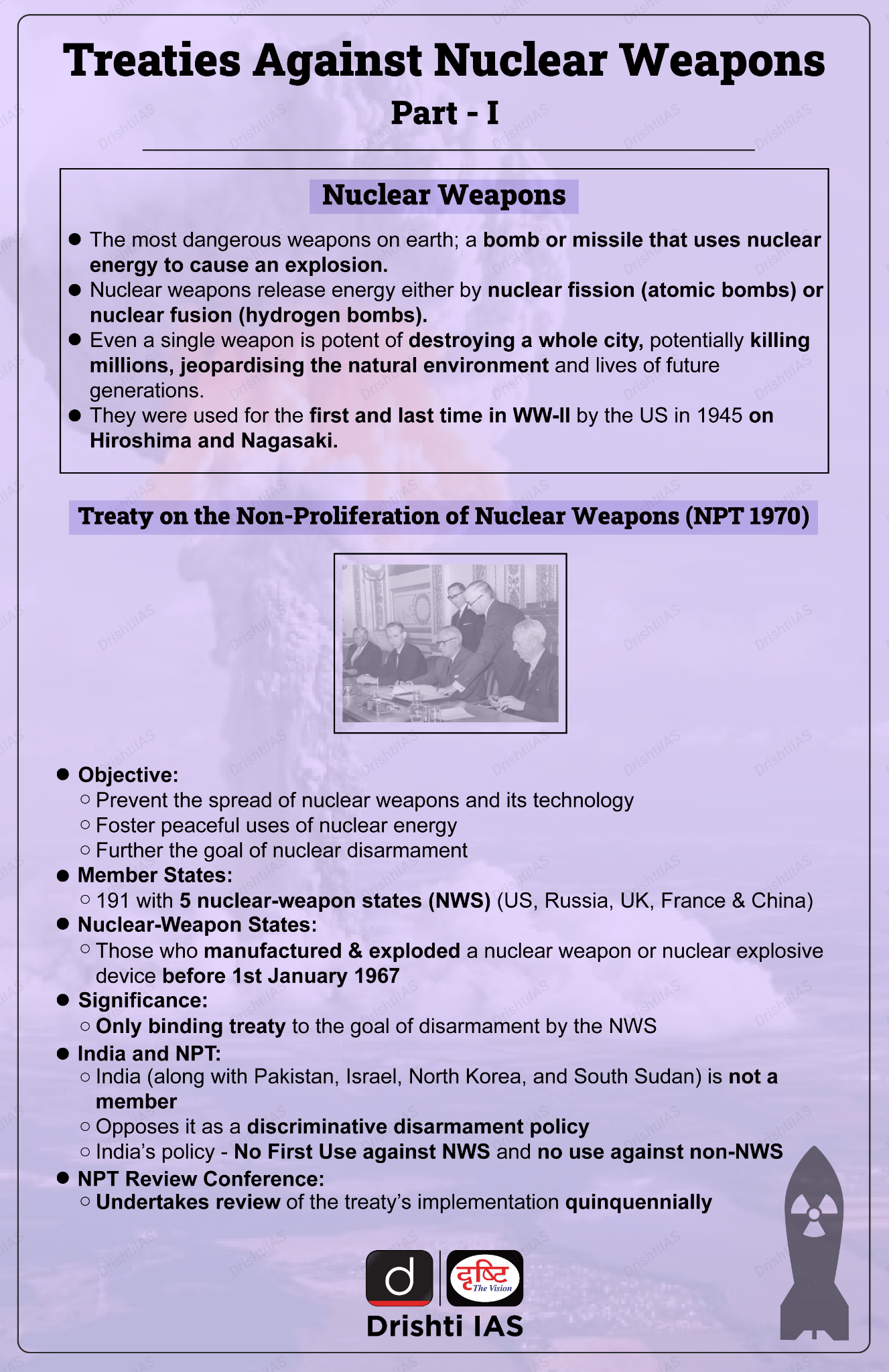Strategic Defence Technologies in India | 13 May 2025
For Prelims: BrahMos, S-400 Triumf, Supersonic Cruise Missile, Indian Ocean Region, unmanned aerial system (UAS), US-India COMPACT Initiative, MFN, Scorpene Submarines.
For Mains: Strategic defence technologies in India and their role in India’s defence preparedness.
Why in News?
India’s Defence Minister Rajnath Singh inaugurated the BrahMos Integration and Testing Centre in Lucknow, underscoring the significance of the BrahMos supersonic cruise missile.
- In a separate development, India's growing defence ties and the effectiveness of the S-400 Triumf system were highlighted as it successfully intercepted missile and Asisguard Songar drone attacks launched by Pakistan, showcasing a swift and decisive kinetic response.
What are Key Facts About BrahMos and S400 Triumf?
BrahMos
- Name Origin: "BrahMos" is derived from Brahmaputra (India) and Moskva (Russia) rivers.
- Developed By: BrahMos Aerospace a joint venture between India’s Defence Research and Development Organisation (DRDO) (50.5%) and Russia's NPO Mashinostroyenia (NPOM) (49.5%).
- First Test: BrahMos was successfully tested in 2001, from Chandipur, Odisha.
- Type: BrahMos is a two-stage supersonic cruise missile designed for high precision and speed. It features a solid-propellant booster in the first stage, followed by a liquid-fuelled ramjet in the second stage that sustains a cruise speed of Mach 3 (three times the speed of sound), making it one of the fastest cruise missiles in the world.
- It is a supersonic cruise missile with 'fire and forget' capability (requiring no further input after being launched).
- BrahMos is a stand-off range weapon designed to be launched from a safe distance beyond enemy defense range. It can cruise at altitudes up to 15 km and strike targets as low as 10 meters for precision.
- Range: BrahMos' range has evolved from 290 km to 350 km, with future versions aiming for up to 800 km and hypersonic speeds (Mach 5+).
- BrahMos is three times faster, 2.5 times longer in range, and has a higher seeker range than subsonic missiles, resulting in greater accuracy and nine times more kinetic energy.
- Variants of BrahMos:
- Ship-Based Variant: Deployed on the Indian Navy's frontline warships since 2005, it can launch a single missile or salvo (up to 8) missiles, effectively executing both sea-to-sea and sea-to-land strikes.
- It was first deployed on the INS Rajput, enhancing the Indian Navy's strike capability.
- Land-Based Variant: It has 4-6 mobile launchers, each carrying 3 missiles that can be fired simultaneously at different targets in various configurations.
- It was operationalized by the Indian Army in 2007, cruises at 2.8 Mach and, after upgrades, can strike targets with precision up to 400 kilometres.
- Air-launched Variant: The BrahMos Air-Launched Cruise Missile (ALCM) is the heaviest weapon integrated with India’s Sukhoi-30 MKI fighter jets.
- With a 1,500 km range, BrahMos-armed Sukhois serve as a key deterrent along borders and in the Indian Ocean Region.
- Submarine-launched Variant: It can operate from 50 meters underwater using separate settings for underwater and aerial flight.
- Futuristic BrahMos-NG: BrahMos-NG (Next Generation), a lighter, stealthier next-gen missile under development, is designed for air, naval, and underwater platforms and torpedo tube launch capability
- Ship-Based Variant: Deployed on the Indian Navy's frontline warships since 2005, it can launch a single missile or salvo (up to 8) missiles, effectively executing both sea-to-sea and sea-to-land strikes.
S400 Triumf
- About: The S-400 Triumf, developed by Russia, it is one of the world’s most advanced long-range surface-to-air missile (SAM) systems.
- It is dubbed SA-21 Growler by North Atlantic Treaty Organization (NATO), it was inducted into service in 2007.
- It is designed for multi-layered air defence, it can intercept a wide range of aerial threats including aircraft, ballistic missiles, cruise missiles, drones, and stealth targets.
- Range: Engages targets up to 400 km away and at altitudes up to 30 km.
- Speed: Can intercept targets flying at speeds of up to Mach 14 (~17,000 km/h).
- Radar Reach: Detects targets up to 600 km using advanced radar systems.
- Target Handling: Tracks up to 300 targets and engages up to 36 simultaneously.
- Missile Types:
- 40N6: Long-range (up to 400 km)
- 48N6: Medium-range (up to 250 km)
- 9M96E / 9M96E2: Short to medium-range (40–120 km)
- India’s Role with the S-400: In 2018, India signed a USD 5.4 billion deal with Russia for five S-400 air defence squadrons.
- Three are currently operational, with two more due by 2026. Known as Sudarshan Chakra in India, the S-400 was used by the IAF to counter a Pakistani aerial attack, highlighting its strategic significance.
Note: Asisguard Songar drones are Turkey’s first indigenous armed unmanned aerial system (UAS), equipped with assault rifles, grenade launchers, mortars, or tear gas, all featuring safety mechanisms. Designed for stealth and coordination, they enable reconnaissance and precision strikes.
What is Kinetic and Non-kinetic Warfare?
- Kinetic Warfare: Kinetic warfare involves the use of direct physical force, such as airstrikes, artillery, and ground assaults, to defeat an adversary.
- Examples include Operation Sindoor (2025), and the Balakot Airstrike (2019), where the IAF targeted Jaish-e-Mohammed camps after the Pulwama terror attack.
- Non-kinetic Warfare: It involves strategies that do not rely on direct physical attacks but instead target an enemy’s political, economic, informational, or psychological stability.
- It includes cyber warfare (e.g., Israel’s cyber attack on Iran’s nuclear facilities), information warfare (e.g., fake Rafale downing claims during Operation Sindoor), electronic warfare (e.g., India’s Samyukta and Divya Drishti systems), psychological warfare (e.g., threats, troop videos), and economic warfare (e.g., India revoking Pakistan’s Most-Favored-Nation (MFN) status post-Pulwama).
What are Defence Agreements of India in the Recent Past?
- India-Russia: India has acquired S-400 systems, MiG-29 fighters, and Kamov helicopters from Russia, alongside agreements for licensed production of T-90 tanks, Su-30MKI fighters, AK-203 rifles, and BrahMos missiles.
- India-US: India and the US launched the US-India COMPACT initiative, aimed at fostering military and technological cooperation.
- A Security of Supply Arrangement (SOSA) and Memorandum of Agreement on Liaison Officers were signed, ensuring reciprocal support for defence needs.
- India has integrated several US-origin defence items, including C-130J Super Hercules, C-17 Globemaster III, and AH-64E Apache helicopters, and is also in talks to acquire F-35 Lightning-II combat aircraft.
- India-UK: Finalised Free Trade Agreement to deepen defence trade and cooperation. Thales UK and Bharat Dynamics Limited (BDL) for the supply of laser beam riding MANPADs (Man-Portable Air Defense Systems) and STARStreak missiles (short range surface-to-air missile).
- Both are collaborating on a first-of-its-kind air-to-air missile assembly and testing facility in Hyderabad.
- India-France: India and France signed an Inter-Governmental Agreement (IGA) for 26 Rafale-M aircraft for the Indian Navy and a Defence Industrial Roadmap, covering Scorpene submarines, Rafale jets, and indigenous production.
Conclusion
India’s defence strategy combines kinetic (BrahMos strikes, S-400 interceptions) and non-kinetic (cyber, electronic warfare) capabilities to counter threats. Strengthened by agreements with Russia (S-400, BrahMos), the US (F-35 talks), and France (Rafale-M), India is enhancing multi-domain warfare readiness, ensuring deterrence against adversaries like Pakistan and China while boosting indigenous defence production.
|
Drishti Mains Question: With reference to India's evolving strategic environment, explain the relevance of developing indigenous air defence and missile systems. |
UPSC Civil Services Examination Previous Year Question (PYQ)
Q. What is “Terminal High Altitude Area Defense (THAAD)”, sometimes seen in the news? (2018)
(a) An Israeli radar system
(b) India’s indigenous anti-missile programme
(c) An American anti-missile system
(d) A defence collaboration between Japan and South Korea.
Ans: (c)
Mains
Q. What is the significance of Indo-US defence deals over Indo-Russian defence deals? Discuss with reference to stability in the Indo-Pacific region. (2020)




.png)